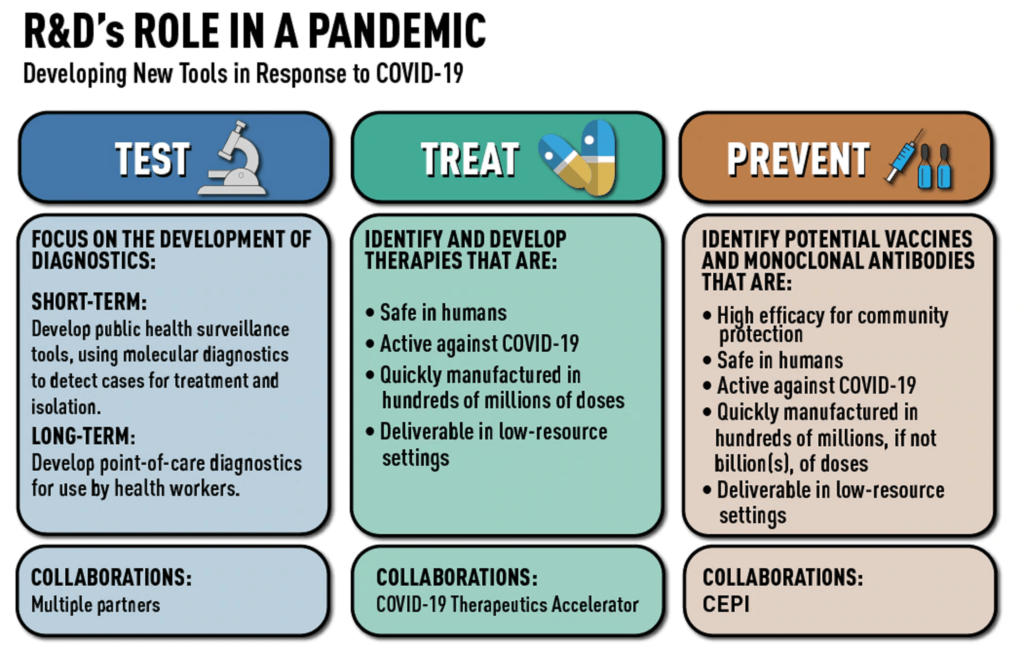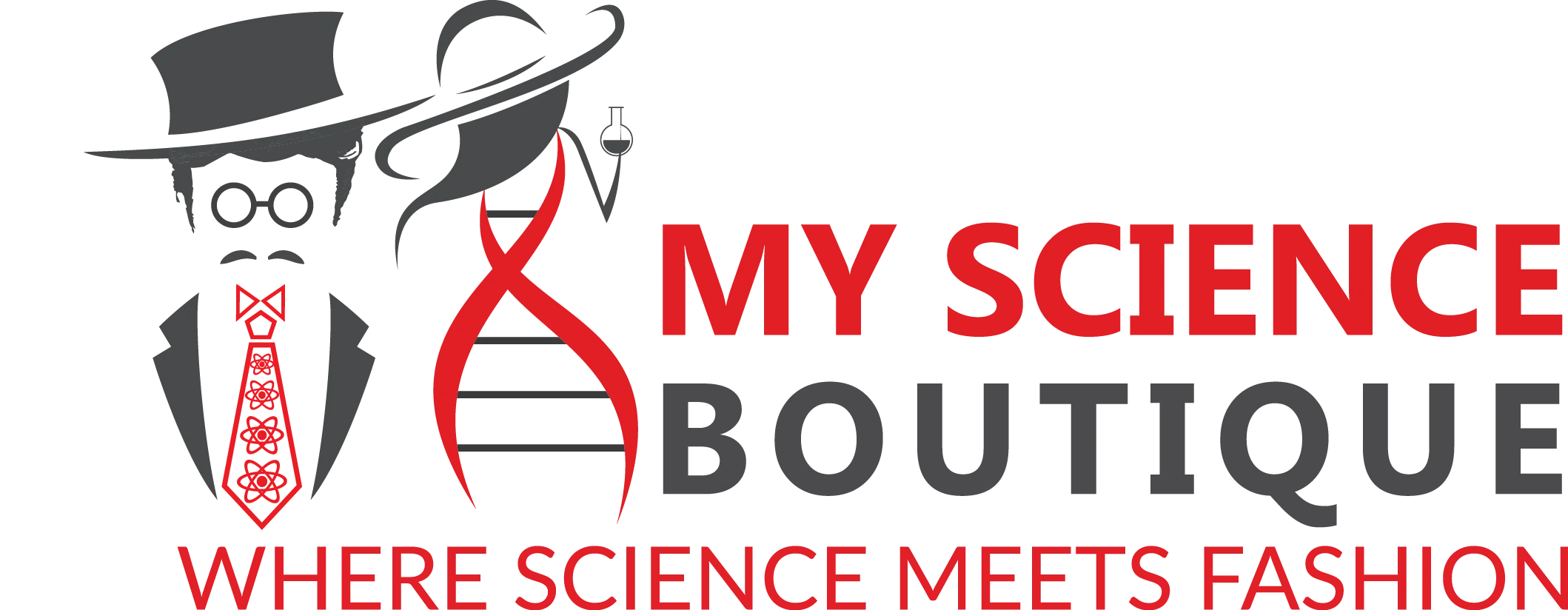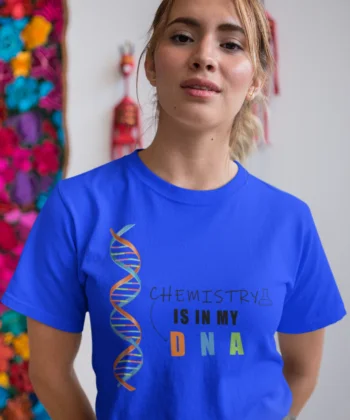Science Blog
COVID-19: A Global Pandemic with Far-Reaching Consequences

When 2020 began, it felt like many other years before it. While going about their normal, individual day-to-day routines, global citizens could not have anticipated that, in a few short months, they would be dealing with one of the greatest public health threats of this century. In this blog post, we will analyze where we currently stand with that threat, the novel coronavirus SARS-CoV-2, and what the future may hold. On March 13, 2020, the U.S. government declared a national emergency over the highly contagious, potentially fatal new coronavirus SARS-CoV-2, the causative agent of the disease COVID-19. This virus has been declared a global pandemic by the World Health Organization and is currently spreading rapidly throughout all 50 United States. On March 16, 2020, the U.S. government and the Centers for Disease Control and Prevention (CDC) issued guidelines to the American public to protect vulnerable populations from COVID-19.
In addition to closing the borders to China, Europe, and Canada, the federal government gave several press conferences to enforce the concept of social distancing. Social distancing is an epidemiological strategy used during a pandemic to spread the number of infections out over time strategically. This action results in the preservation and acquisition of limited medical resources like intensive care unit beds, ventilators, and healthcare workers. Specifically, the highest risk group, comprised of older citizens and citizens with pre-existing conditions, are advised to stay home and self-isolate. Millenials, despite having a lower risk of fatality, are advised to limit their gatherings to less than ten people in order to minimize asymptomatic spread. In every state, schools, restaurants, and bars have been closed in order to enforce social distancing.

Many interlocking groups must collaborate in order to combat a pandemic successfully. Global, national, and state governments must work with the private sector, healthcare providers, public health officials, and citizens to stop the spread of this virus. Long term, governments, funding agencies, research labs, and pharmaceutical companies must collaborate to produce treatments and a vaccine. The three main tenants to slow and stop a pandemic are testing, treatment, and prevention. Currently, minimizing deaths and economic losses during the COVID-19 pandemic requires countries to have rapid and available diagnostic testing. In many states, diagnostic tests are currently scarce, and thus reserved for patients who are already sick with a dry cough, fever, and respiratory distress. To combat the scarcity, the U.S. government has partnered with private sector companies Thermo Fischer and Roche to meet the growing demand for tests. During the testing process, the nose and throat are swabbed, and DNA is extracted from the swab. rRT-qPCR is then run on the DNA sample to ascertain whether it contains RNA from SARS-CoV-2.
As there is no existing cure or vaccine for COVID-19, treatment relies around the mitigation of symptoms. Treatment for those with mild COVID-19 can be done at home, where the CDC advises citizens to treat themselves similarly to the bad flu. Treatment for those with severe COVID-19 must be performed under the care of physicians in an inpatient setting. Patients with severe COVID-19 experience fever and acute respiratory distress and pneumonia and require the aid of a ventilator to breathe. COVID-19 patients have required ventilation for 15 to 20 days. During acute respiratory failure, some patients experience strain on other organs, resulting in organ failure. Advanced age and underlying conditions increase the risk of experiencing severe COVID-19. Those with hypertension, diabetes, and the immunocompromised are at very high risk. During the treatment of COVID-19, healthcare workers are put at high risk due to increased exposure to the virus. Hospital workers require personal protective equipment like gloves and masks to prevent transmission within the hospital setting.
Long term, vaccines facilitate to prevent disease fatalities and viral spread. Minimizing deaths and economic losses will be aided by the development of a vaccine against SARS-CoV-2, as well as increased circulating immunity in the global population. Currently, the U.S. government has announced that Phase 1 clinical trials for a SARS-CoV-2 vaccine have begun in March 2020. The vaccine trials have begun at unprecedented speed. However, the distribution of a vaccine is likely at least a year away. Until a vaccine is available, scientists are working to develop model systems to study the virus in the laboratory. By March 2020, many labs around the globe were able to propagate the new virus in cell culture. Thanks to this breakthrough, many human proteins the virus interacts with have been identified. Scientists can subsequently study which existing drugs may inhibit the viral lifecycle or protect human proteins from viral action. In addition, epidemiological data from many countries has revealed a few promising antiviral drugs that may be effective against mitigating lung damage caused by SARS-CoV-2.
The social impact of COVID-19 is being heavily felt throughout the globe. Many inherent flaws in the systems available for governments to respond to a global pandemic were revealed as the crisis amplified. Many citizens in China, Italy, France, Spain, Iran, and now the U.S. have been confined to their homes, and nonessential businesses have been shut down. In countries with the most infections, healthcare supplies and workers are under intense strain from the high number of severe inpatient cases of COVID-19. In the United States, visitors have been prohibited in nursing homes, with many residents eating meals in their rooms. Widespread hoarding of resources like water, medicine, thermometers, and toilet paper from grocery stores has left many shelves empty.

Economically , workers in the restaurant and bar industry are out of work and unsure how to pay for rent and utilities. The airline industry is similarly affected, with many flights canceled or nearly empty. A government bailout for affected corporations and workers is planned, but has not yet manifested. With so many out of work and struggling and the end of the pandemic uncertain, the stock market has plummeted. Struggling businesses may have no choice but to undergo mass layoffs in the coming months, increasing the number of citizens struggling to meet basic needs. With so many businesses and manufacturers in China, The United States, Italy, France, Spain, and Britain shut down or operating at low capacity, the global supply chain is threatened. This crisis is possibly best exemplified by the dire need for more ventilators worldwide, and the inability to ramp up production. The ventilators are mechanistically complex, comprised of many components manufactured by different countries around the world, all of whom are in crisis. While the length of the pandemic is uncertain, it is certain the global population and economy will feel its impacts for years to come.
References and Further Reading:
- https://www.gatesfoundation.org/TheOptimist/Articles/coronavirus-mark-suzman-therapeutics
- https://www.nejm.org/doi/full/10.1056/NEJMp2005492
- https://www.cdc.gov/coronavirus/2019-ncov/index.html
- https://www.thelancet.com/journals/lancet/article/PIIS0140-6736(20)30566-3/fulltext
- https://www.thelancet.com/journals/lanres/article/PIIS2213-2600(20)30116-8/fulltext
- https://coronavirus.jhu.edu/map.html
- https://ourworldindata.org/coronavirus
- https://www.weforum.org/agenda/2020/02/why-is-coronavirus-a-global-business-risk/
- https://www.pwc.com/gx/en/issues/crisis-solutions/covid-19.html
- https://www.weforum.org/agenda/2020/02/why-is-coronavirus-a-global-business-risk/
Help us change the way science is perceived and presented.
Join the mission to support science literacy through these coolest science apparel.
Special note: A portion of all our proceeds goes towards supporting STEM education of young boys and girls.







